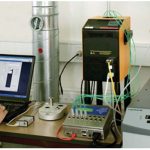Metallography is a specialized field of study that focuses on examining the microstructure of metals and alloys. By studying the microstructure, metallurgists and material scientists can gain valuable insights into the properties and performance of materials. In this blog, we will explore the basics of metallography, including its principles, techniques, and applications.
What is Metallography?
Metallography is the science of studying the microscopic structure of metals and alloys. It involves preparing specimens, typically through cutting, grinding, polishing, and etching, and then examining them under a microscope. By studying the microstructure, metallurgists can determine the composition, grain size, grain boundaries, phases, and defects present in the material.
Principles of Metallography
The key principle of metallography is to reveal the microstructure of a material using optical or electron microscopy. This is achieved through careful specimen preparation, which includes cutting the specimen to size, mounting it in a resin, grinding and polishing the surface to a mirror-like finish, and finally etching the surface to reveal the microstructure.
Techniques Used in Metallography
There are several techniques used in metallography to prepare and examine specimens:
- Sample Preparation: This involves cutting the specimen to size, mounting it in a resin, and then grinding and polishing the surface to a mirror-like finish.
- Etching: Etching is used to reveal the microstructure of the material. Different etchants are used depending on the material and the information required.
- Microscopy: The prepared specimen is then examined under a microscope. Optical microscopy is commonly used for routine examinations, while electron microscopy is used for more detailed analysis.
Applications of Metallography
Metallography has a wide range of applications in various industries, including:
- Materials Science: Metallography is used to study the structure of metals and alloys to understand their properties and behavior under different conditions.
- Quality Control: Metallography is used to assess the quality of materials, identify defects, and ensure that materials meet the required specifications.
- Failure Analysis: Metallography is used to investigate the causes of failures in materials, such as fractures, corrosion, and wear.
- Research and Development: Metallography is used in research and development to develop new materials with improved properties and performance.
In conclusion, metallography is a valuable tool for studying the microstructure of metals and alloys. By understanding the basics of metallography, researchers, engineers, and metallurgists can gain valuable insights into the properties and behavior of materials, leading to advancements in materials science and engineering.







